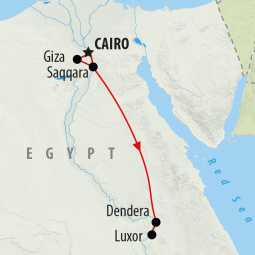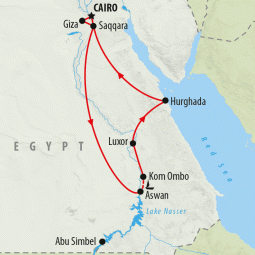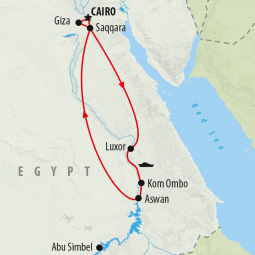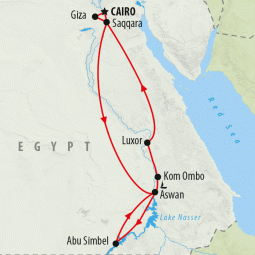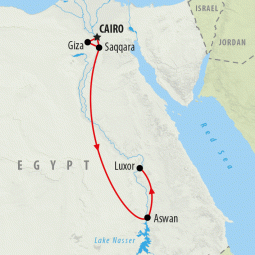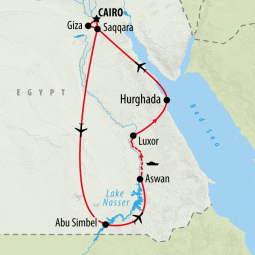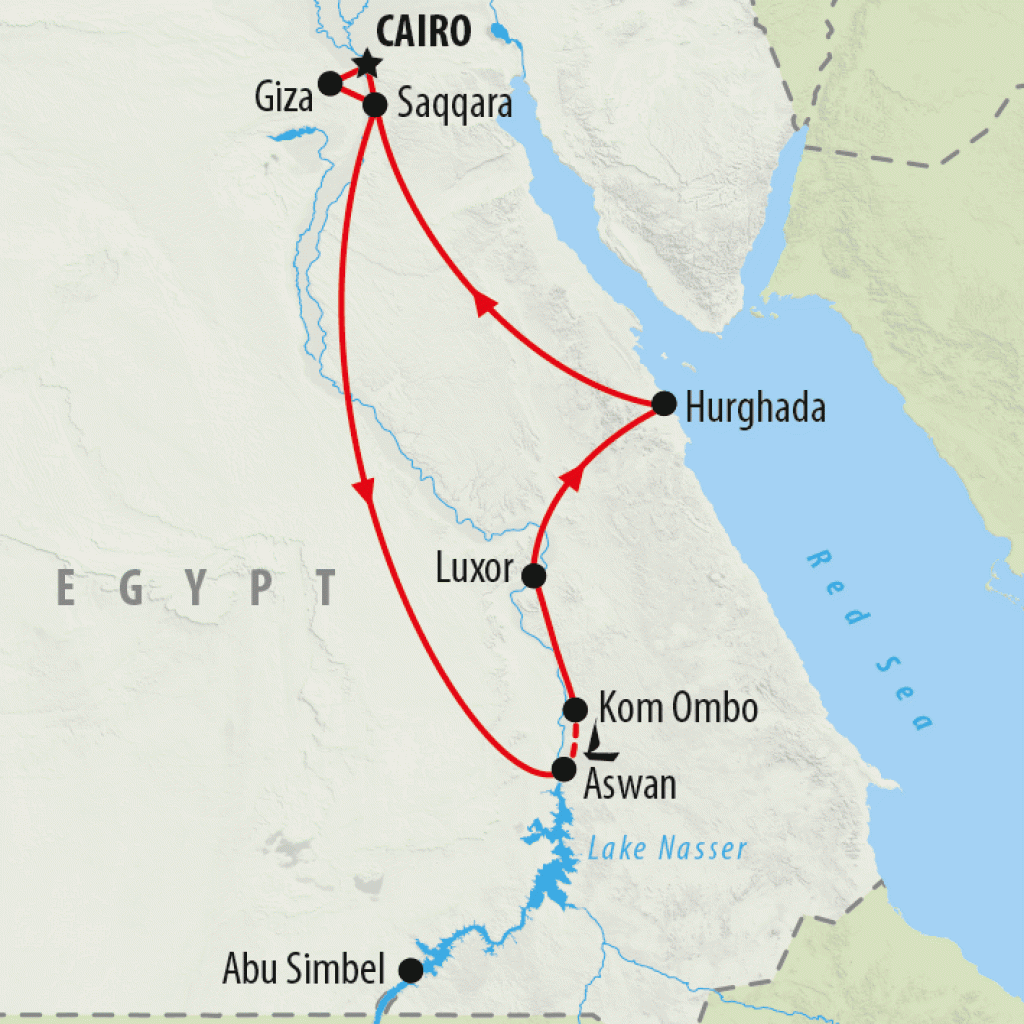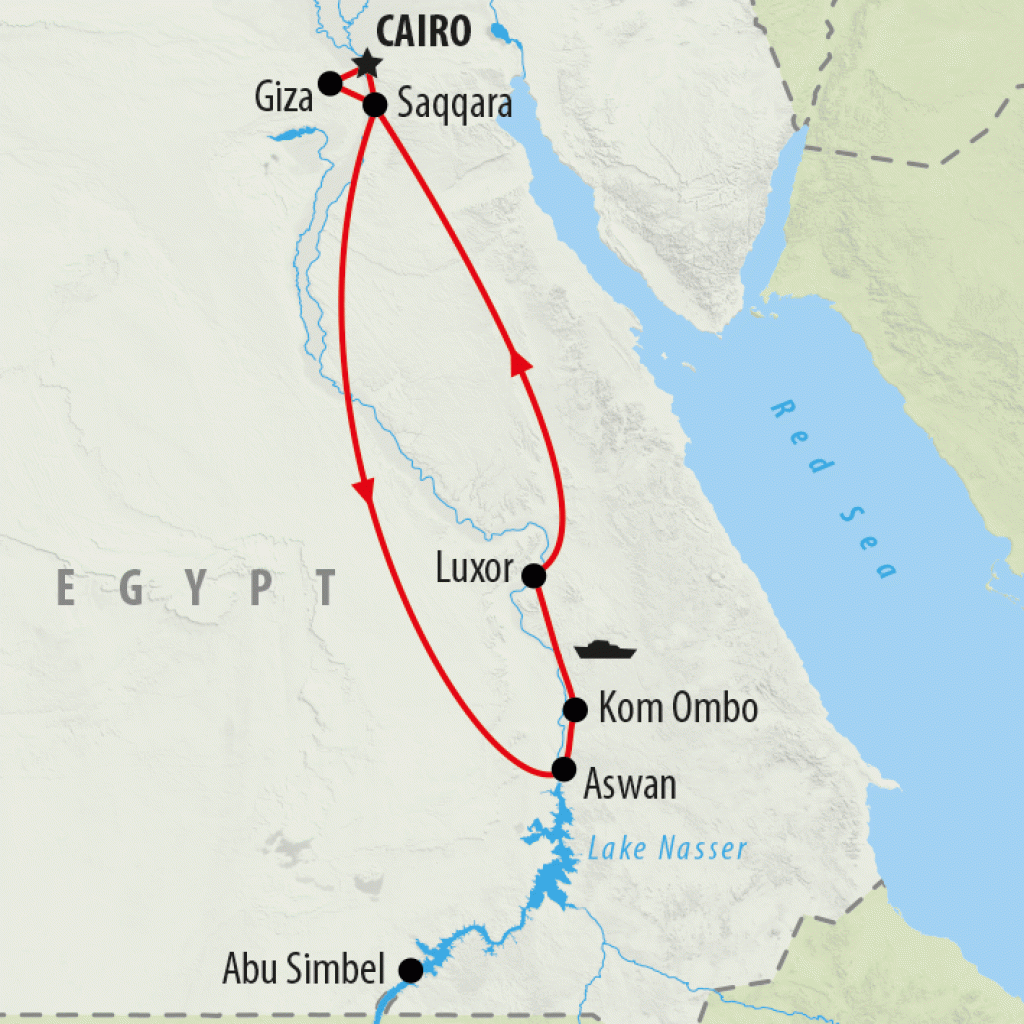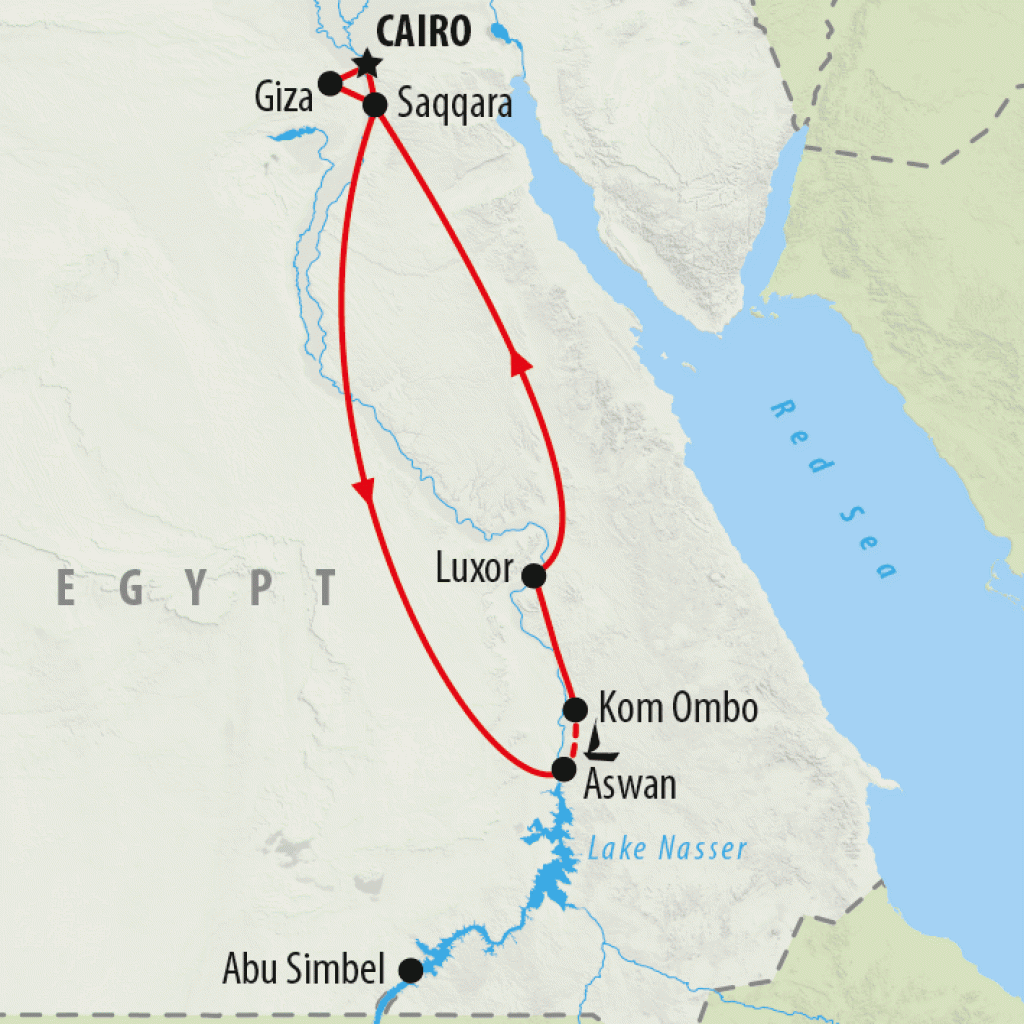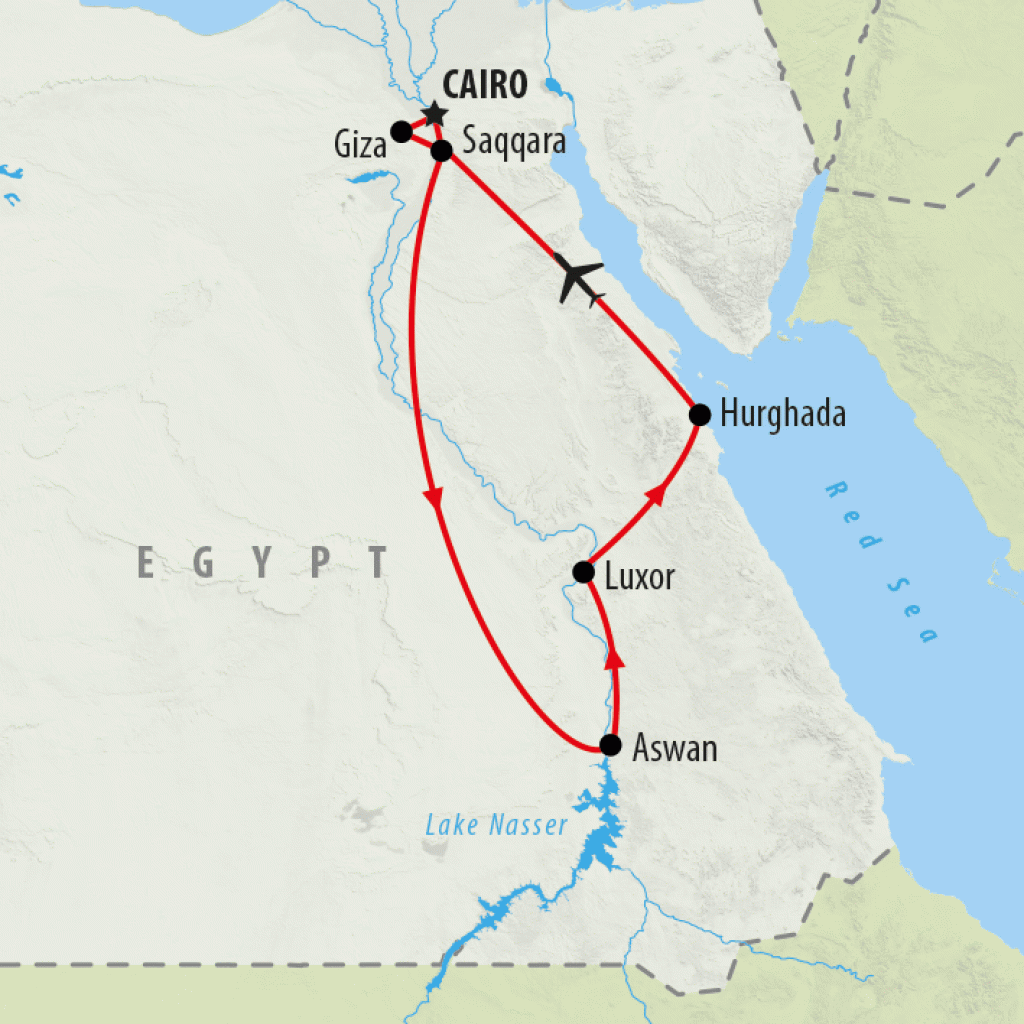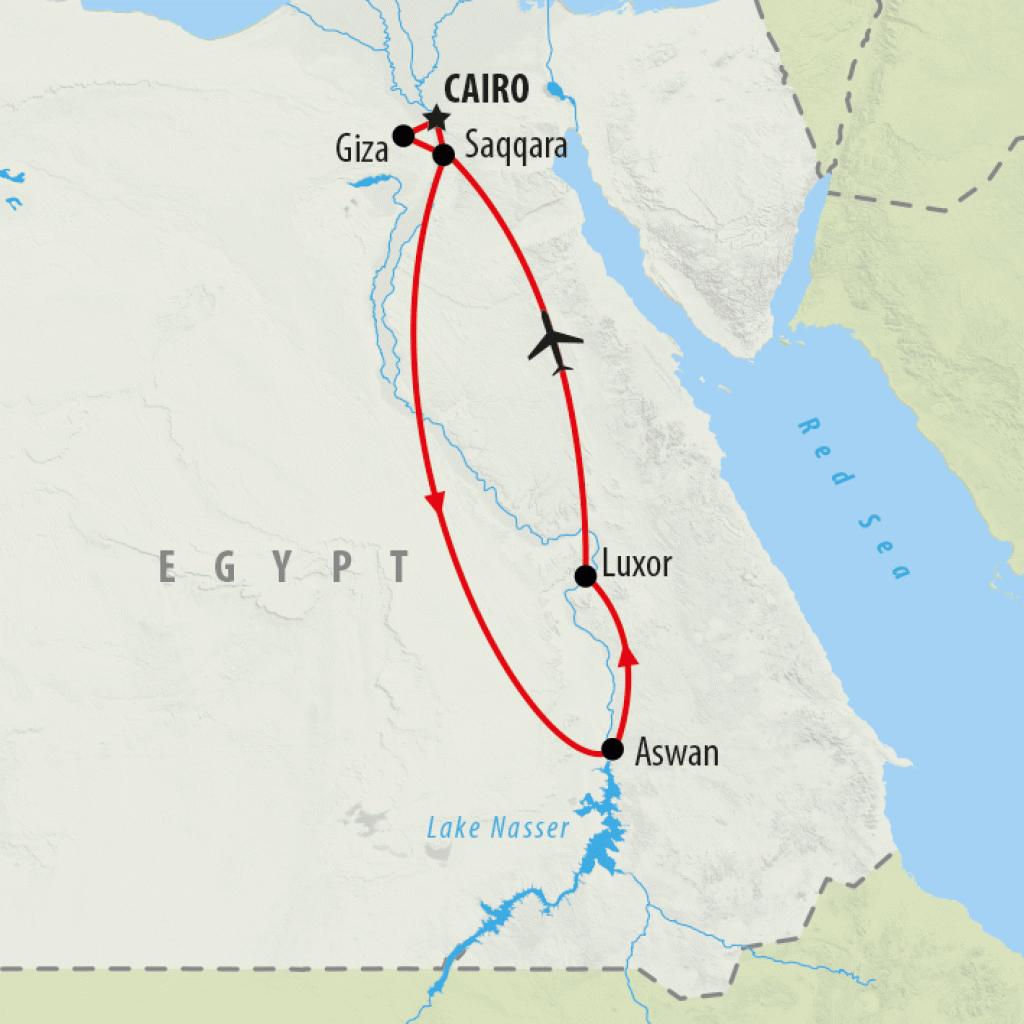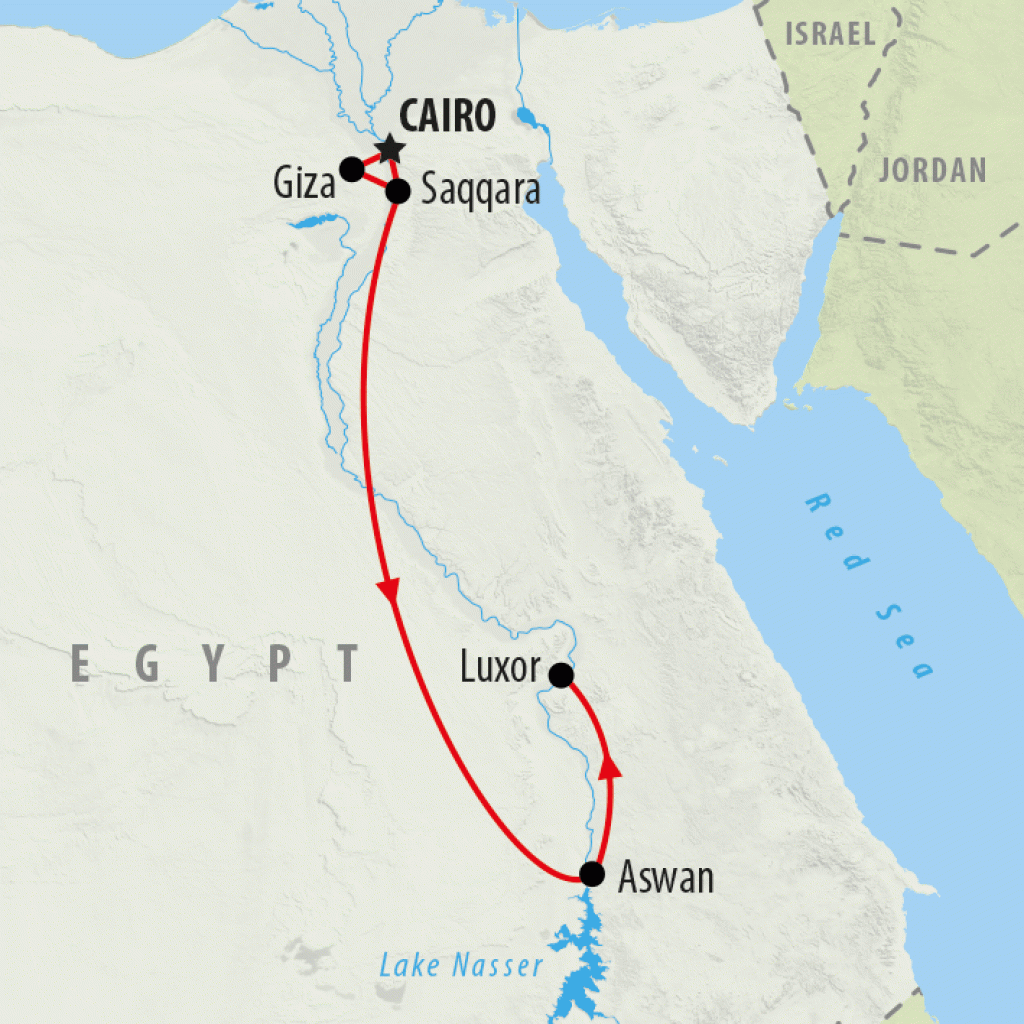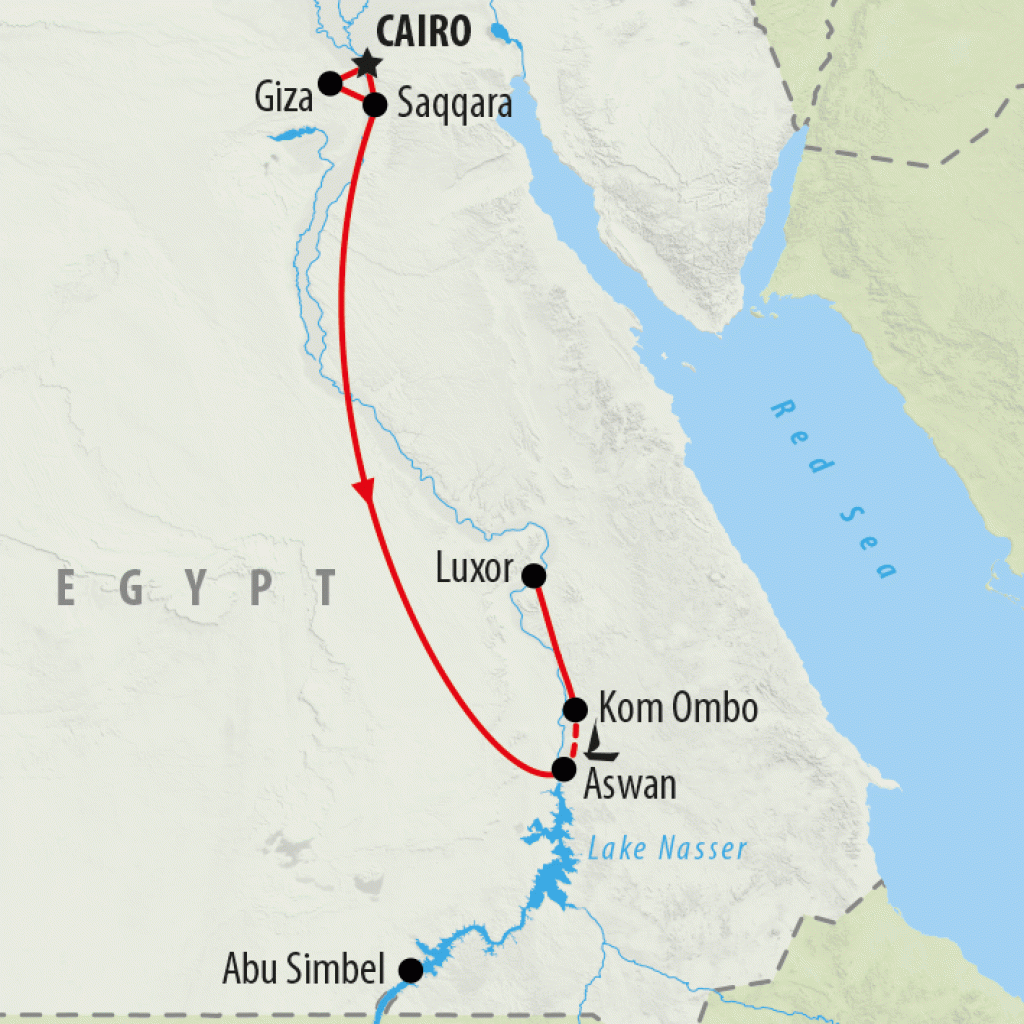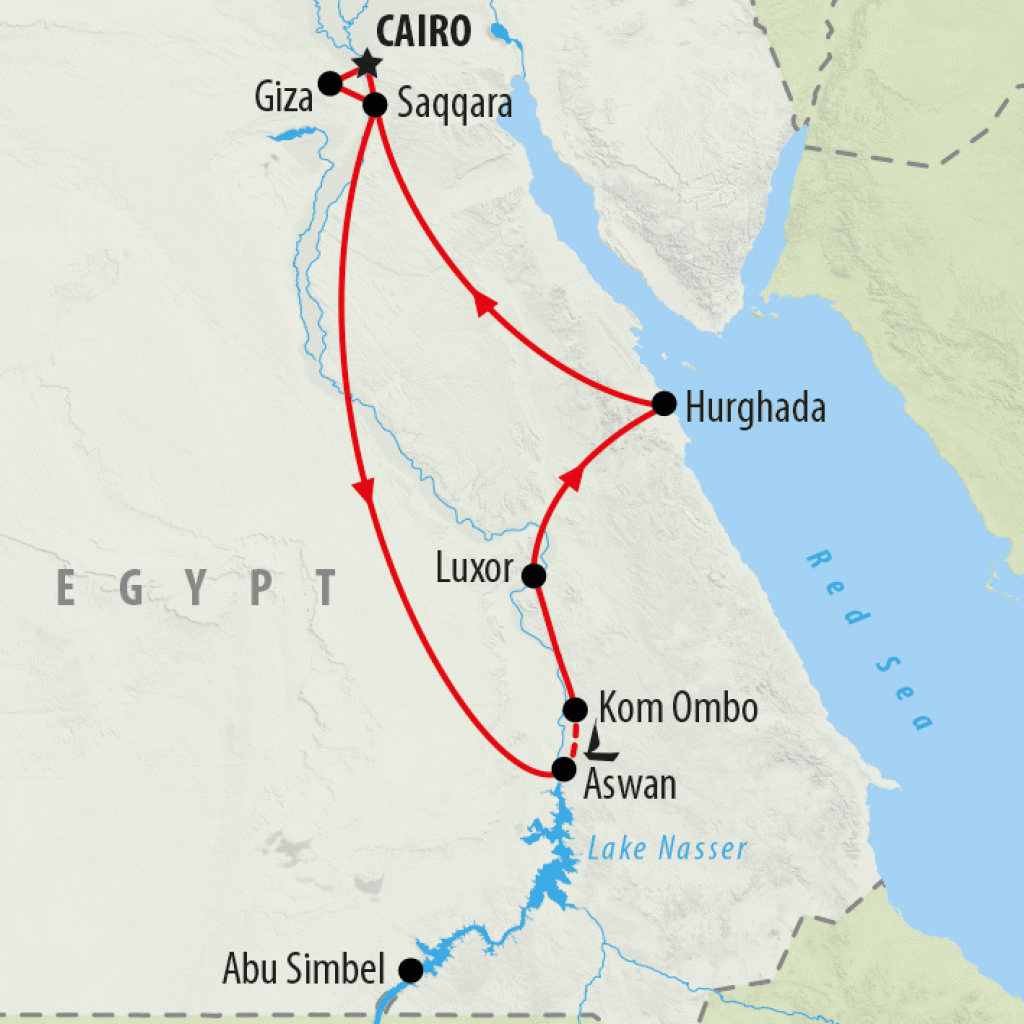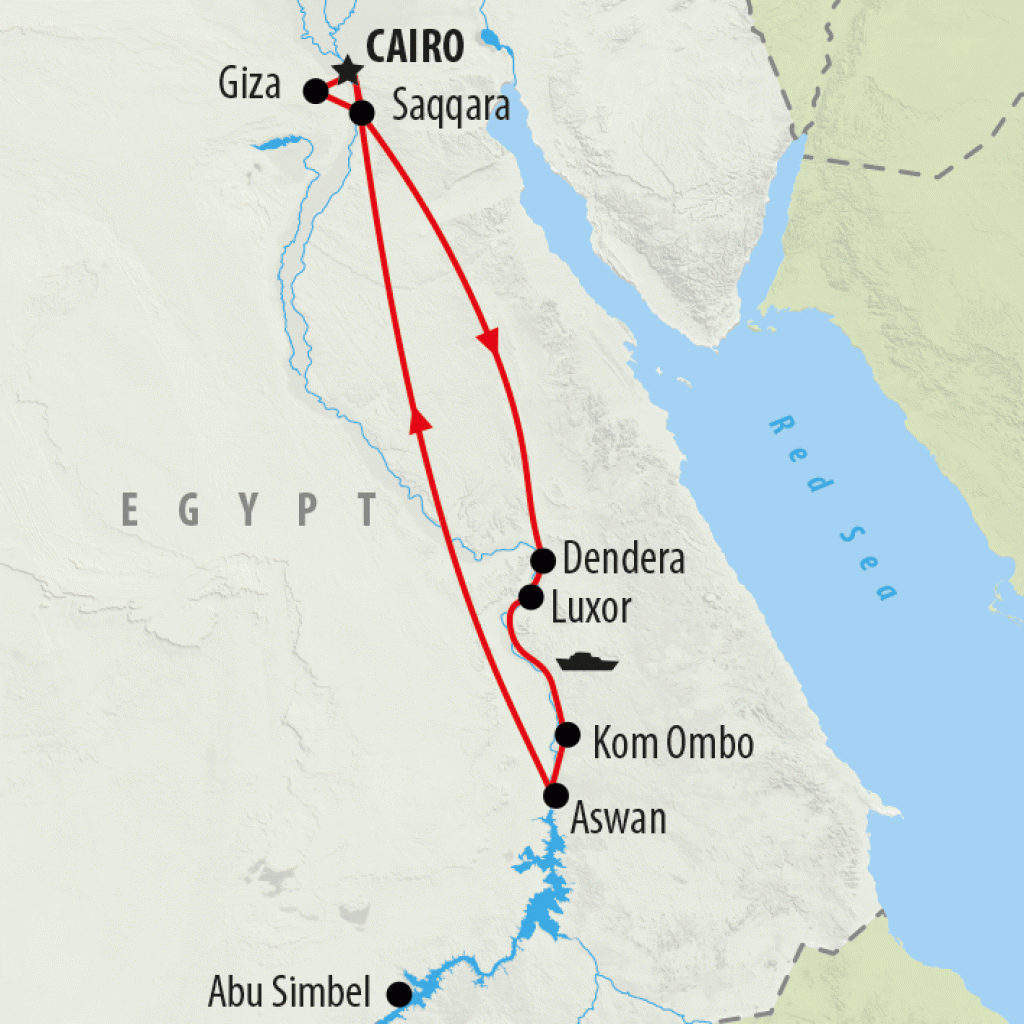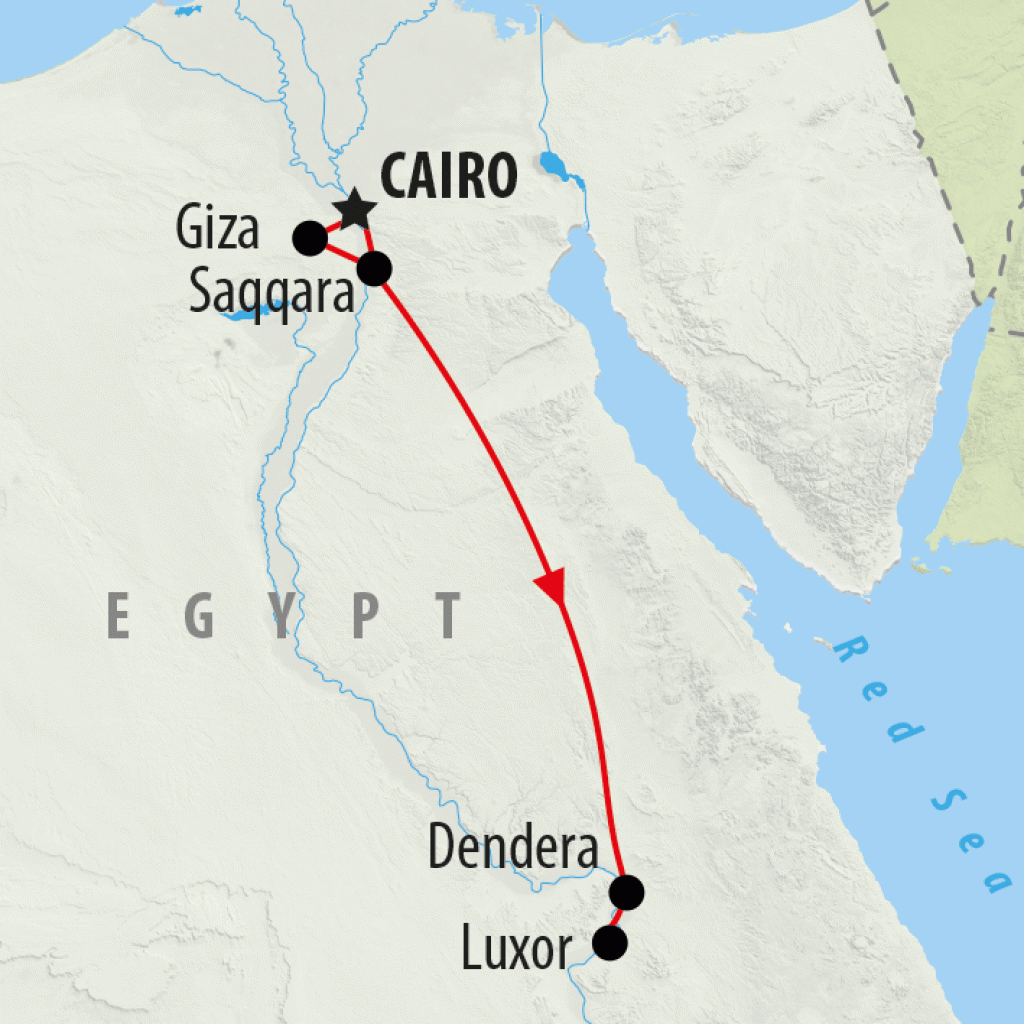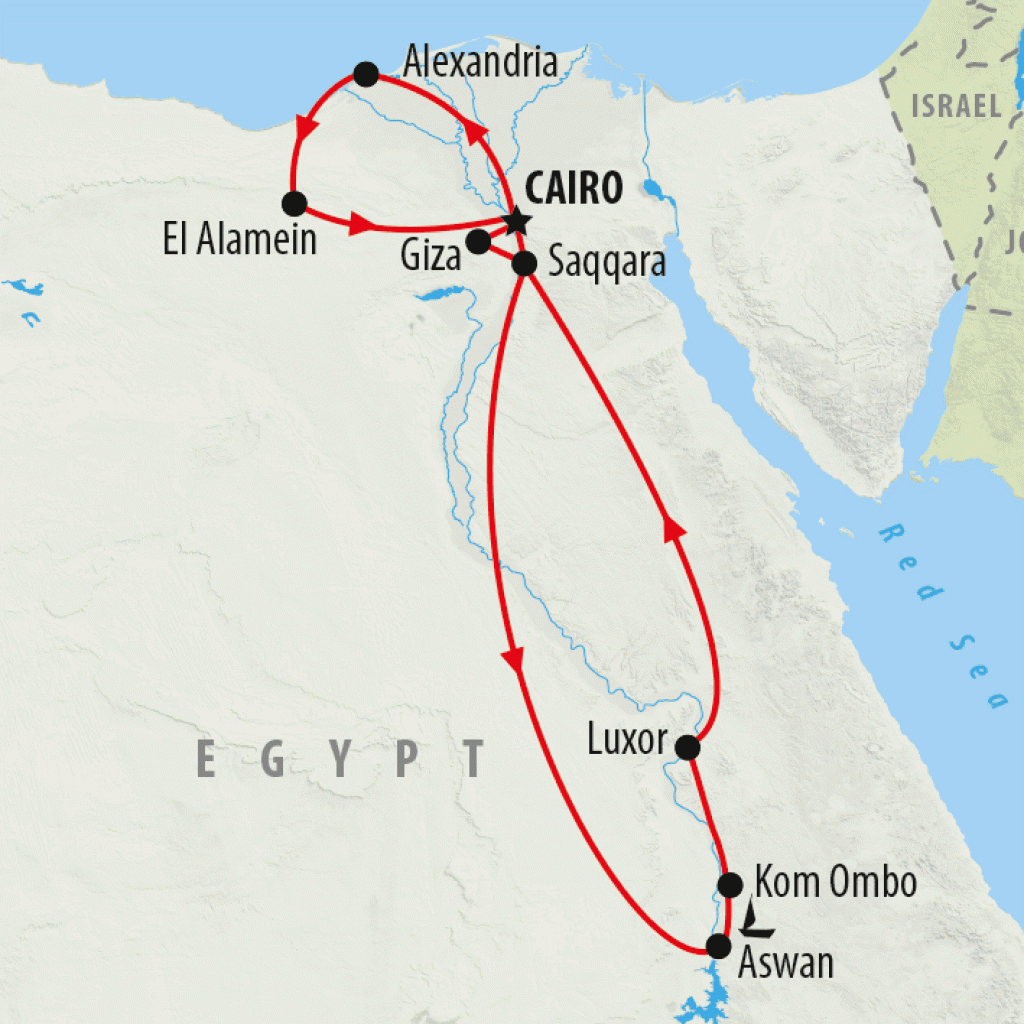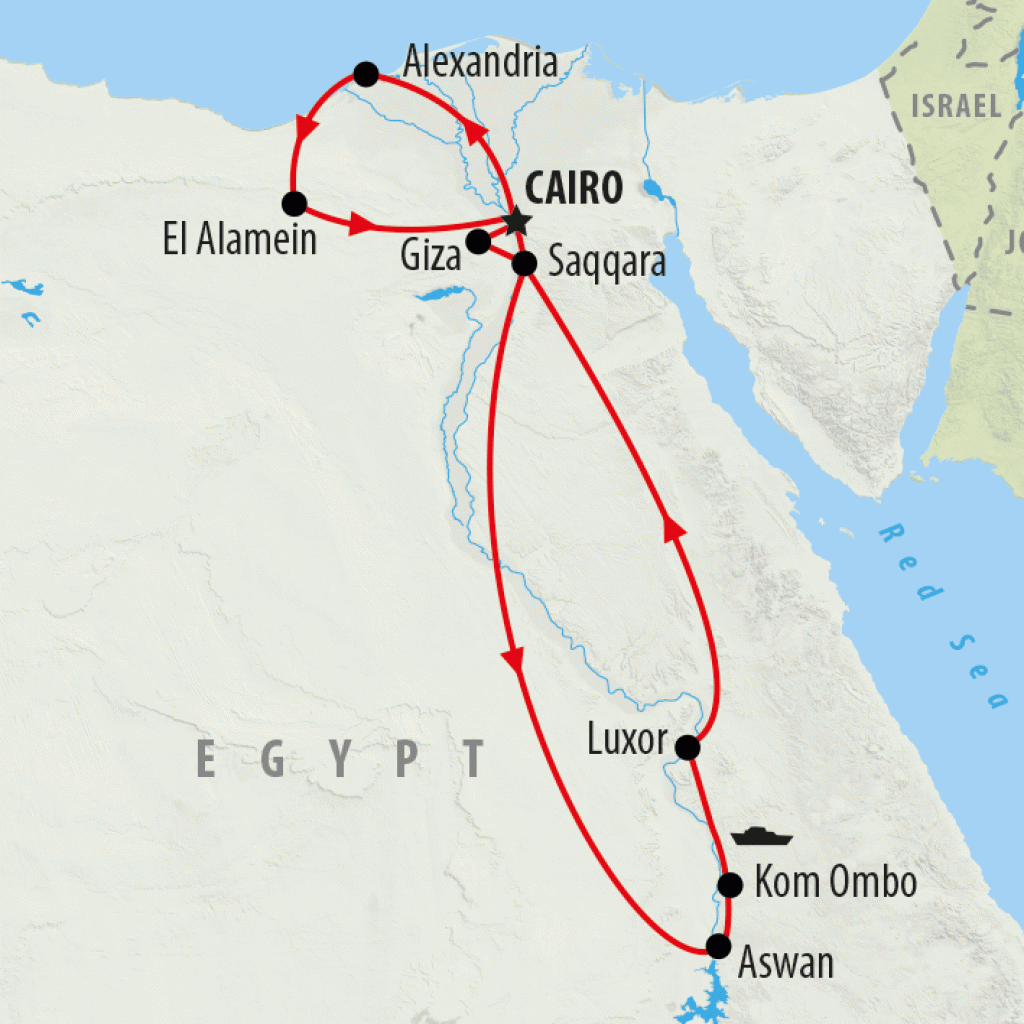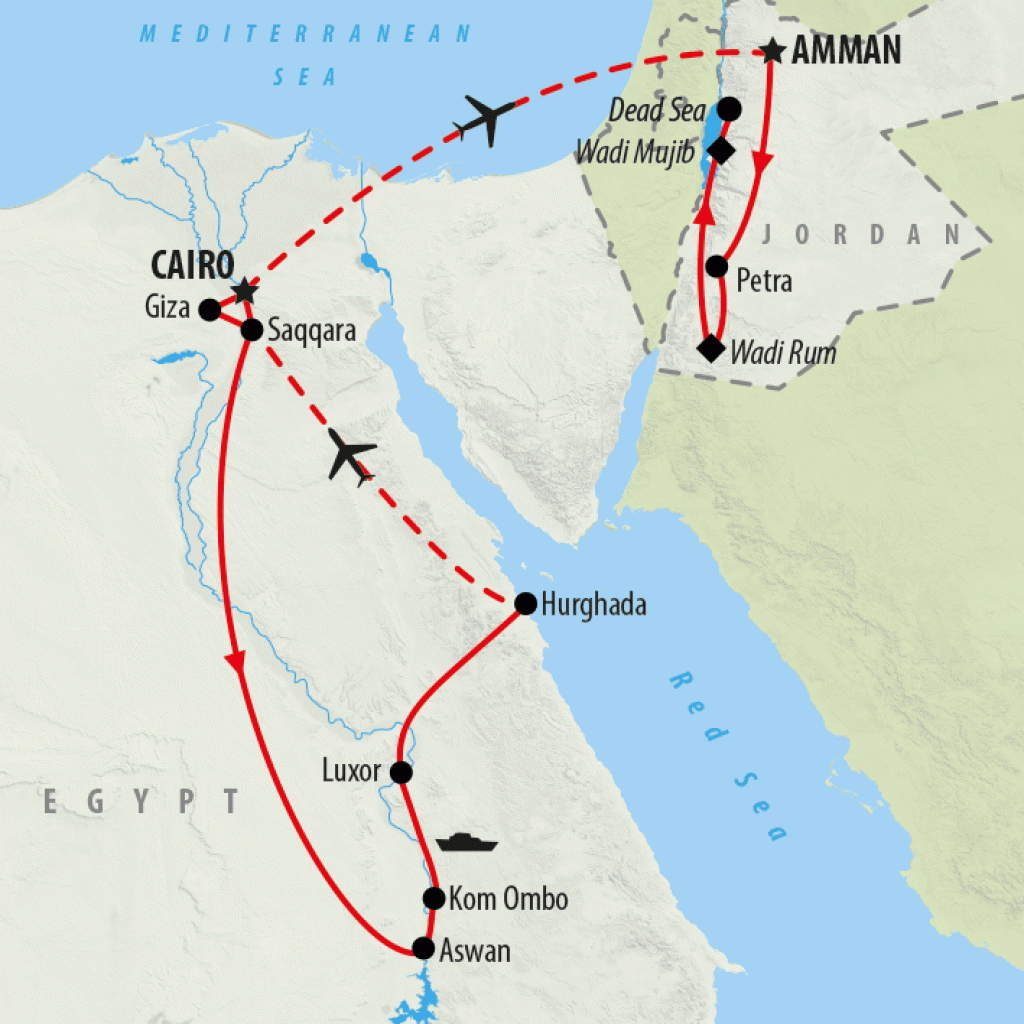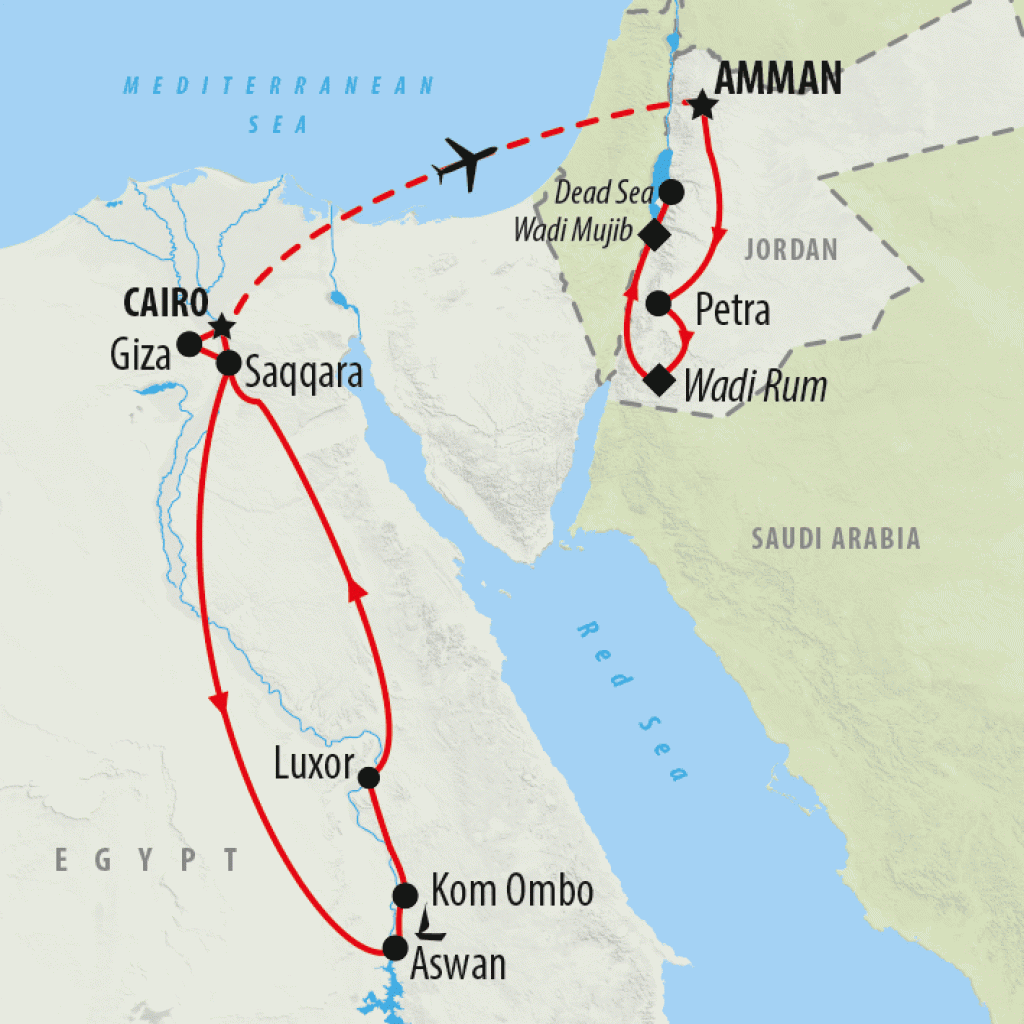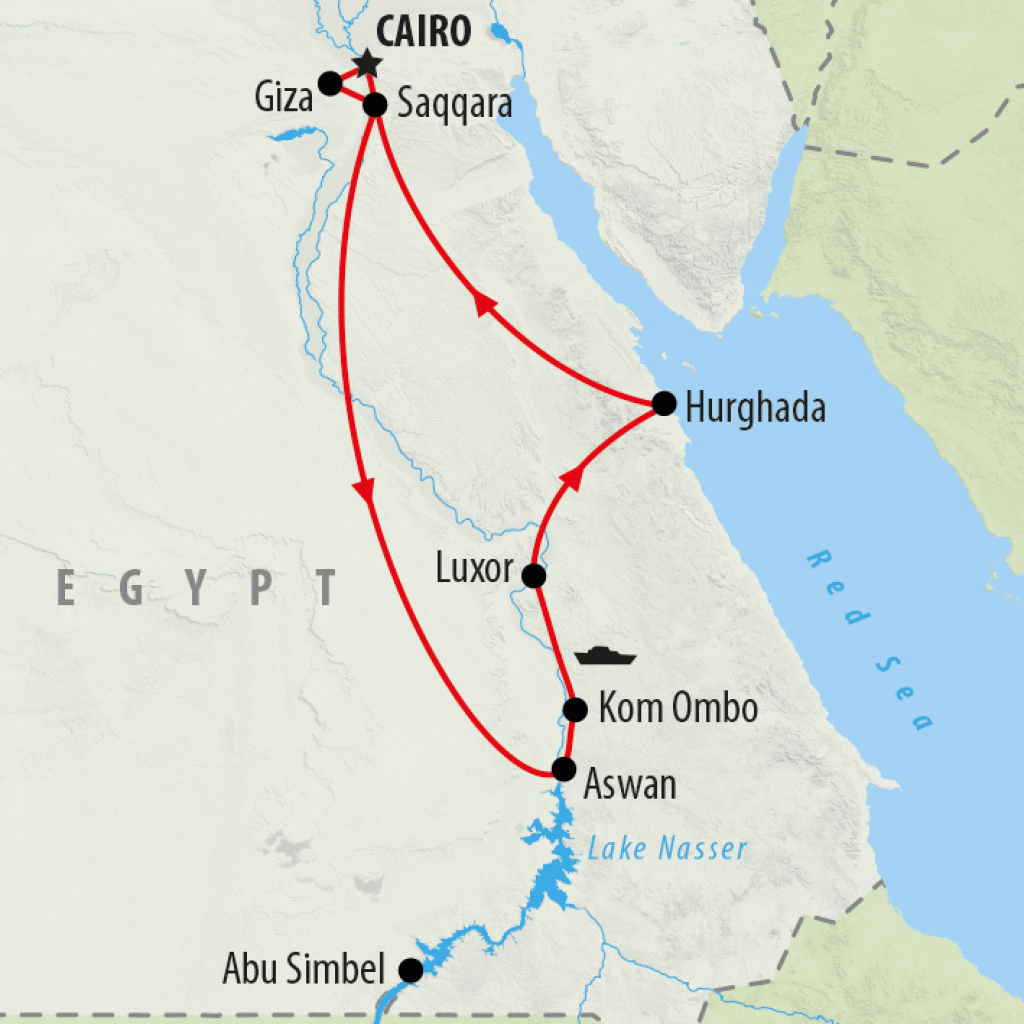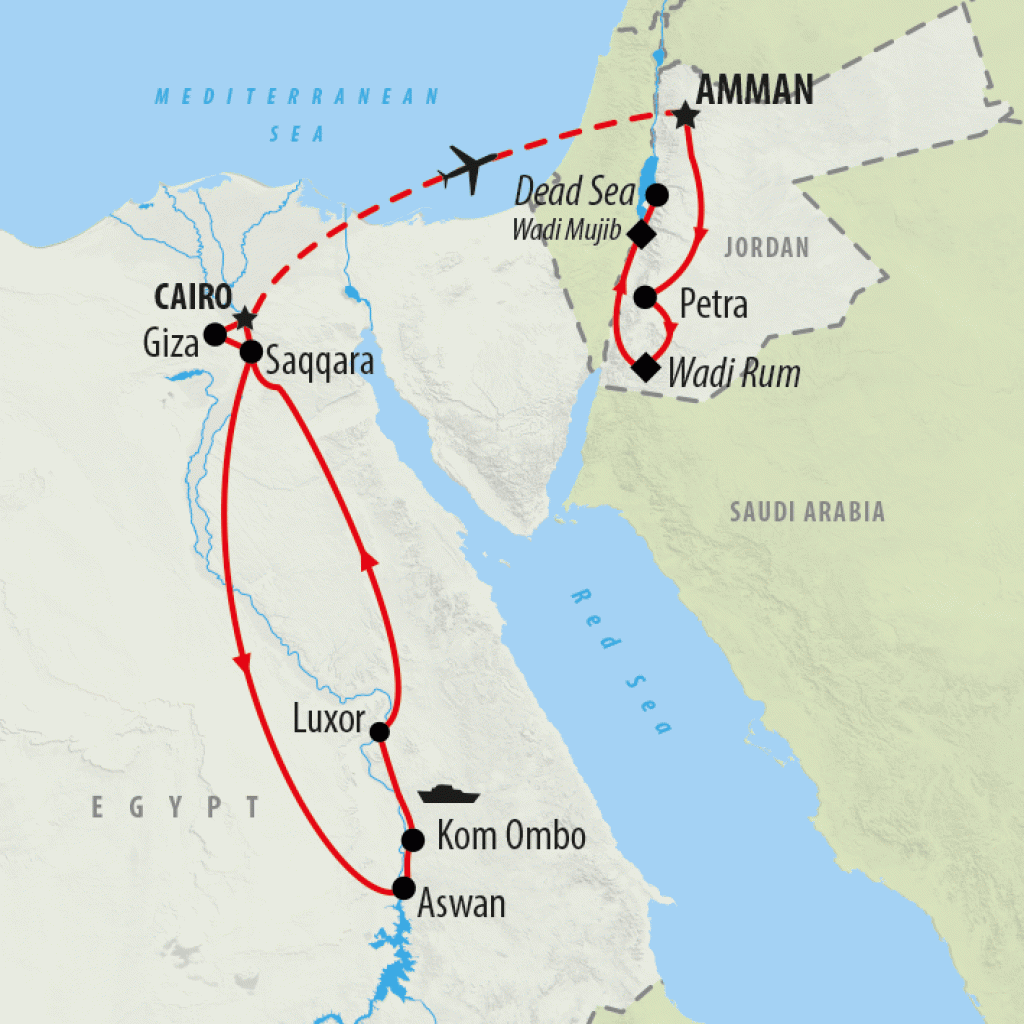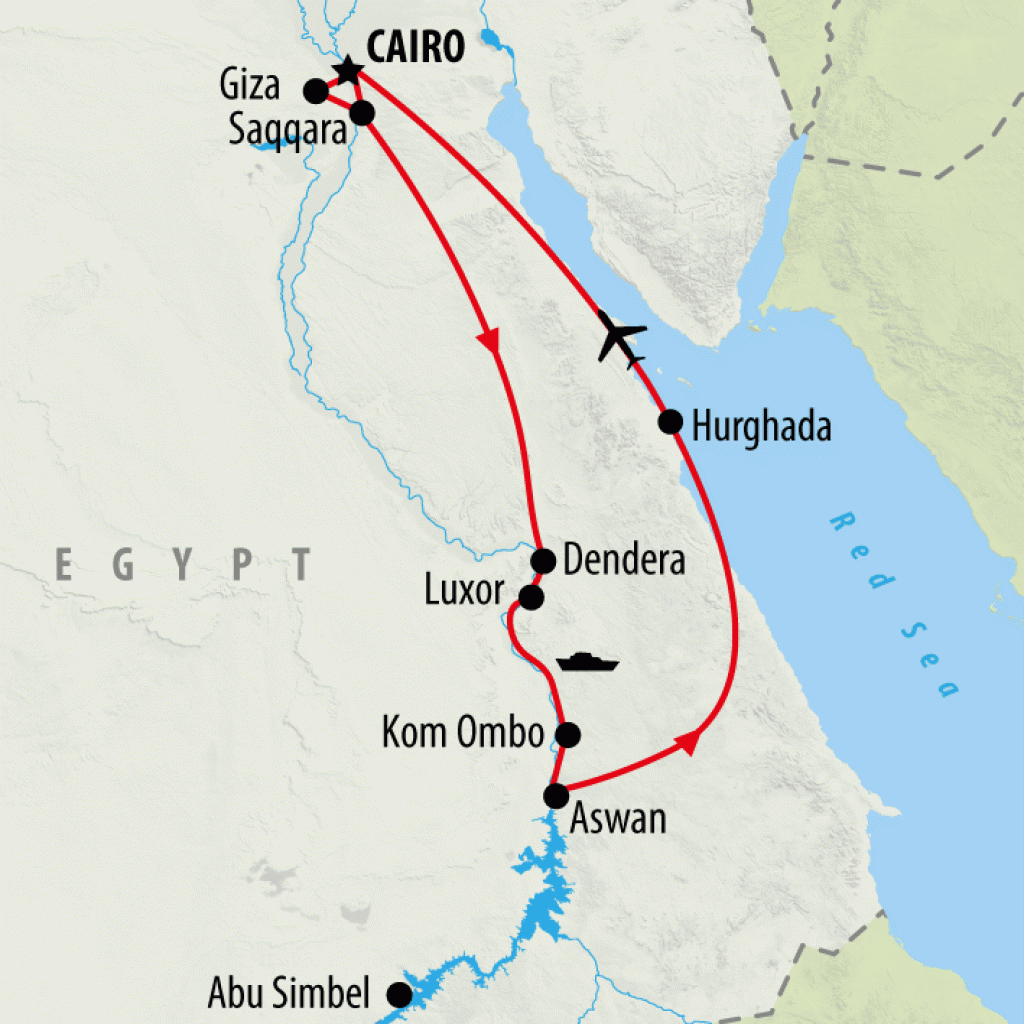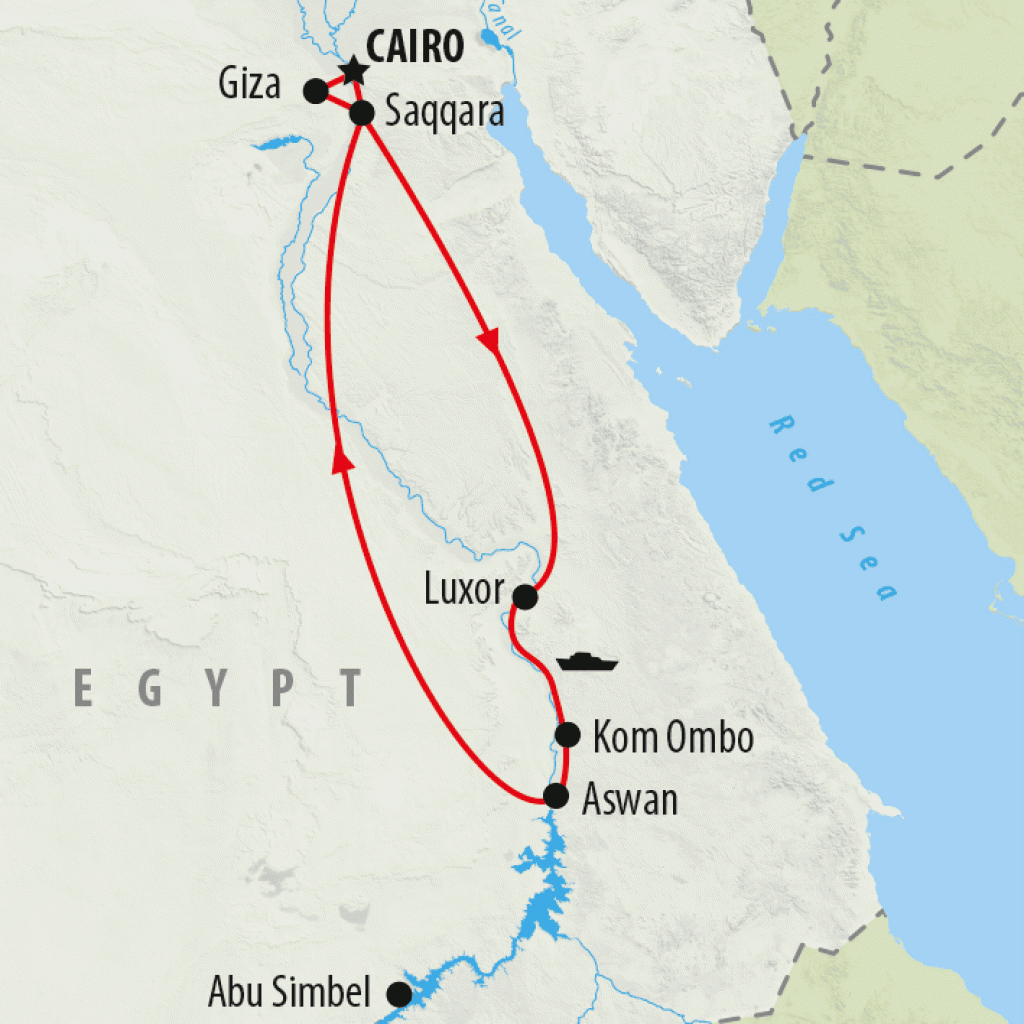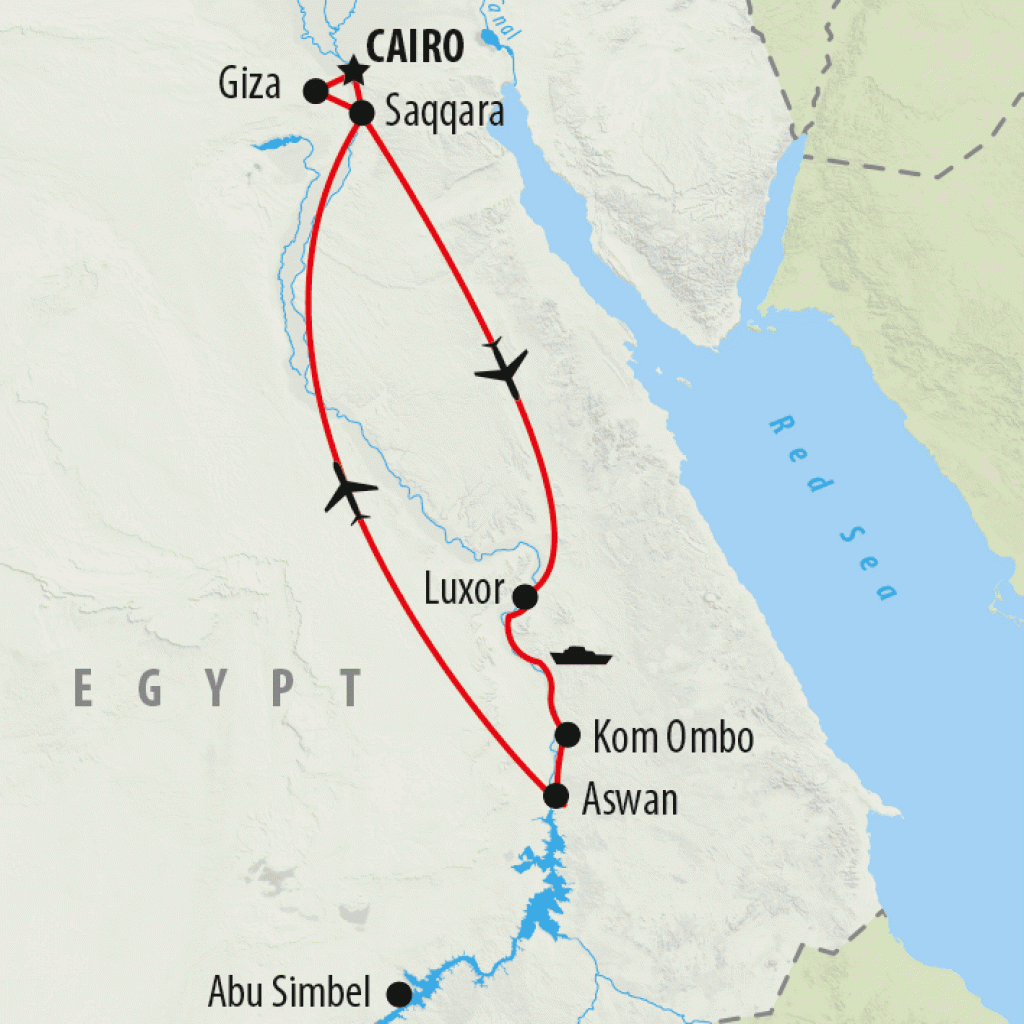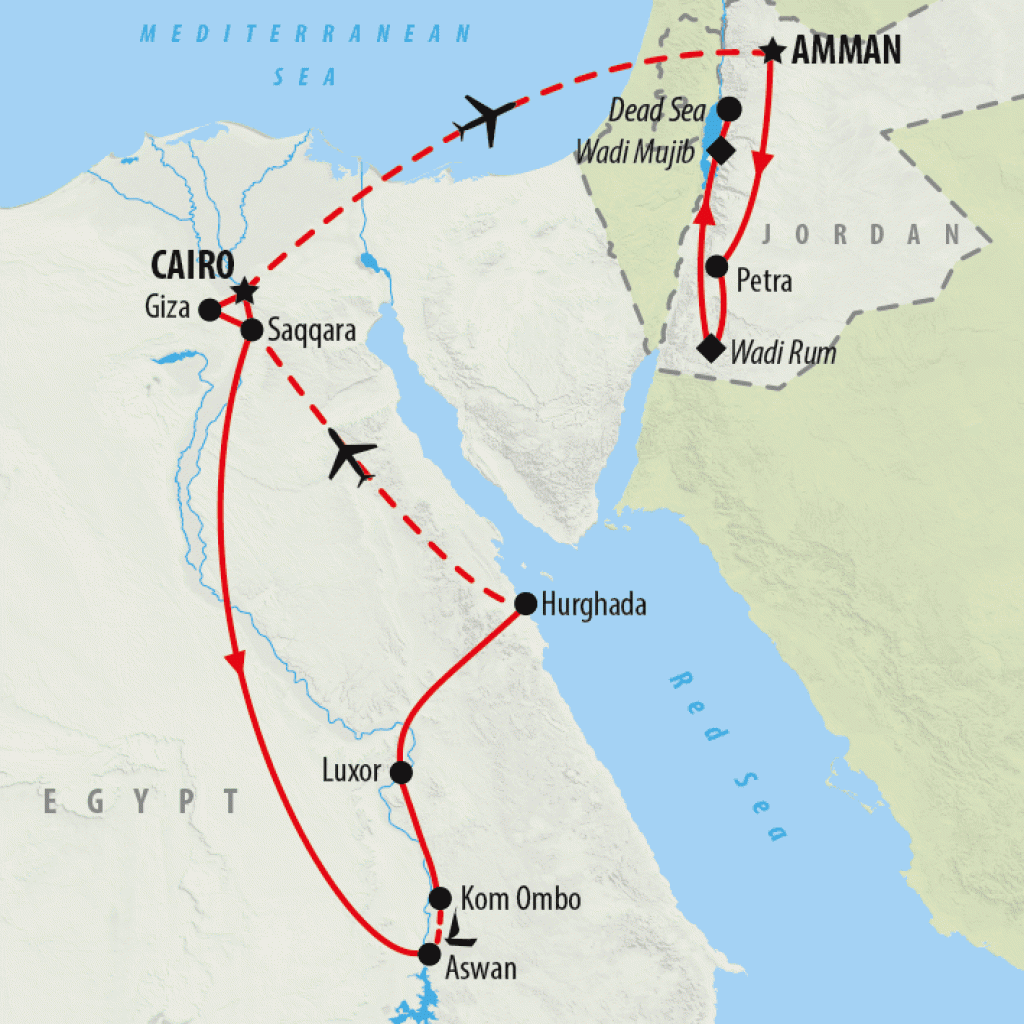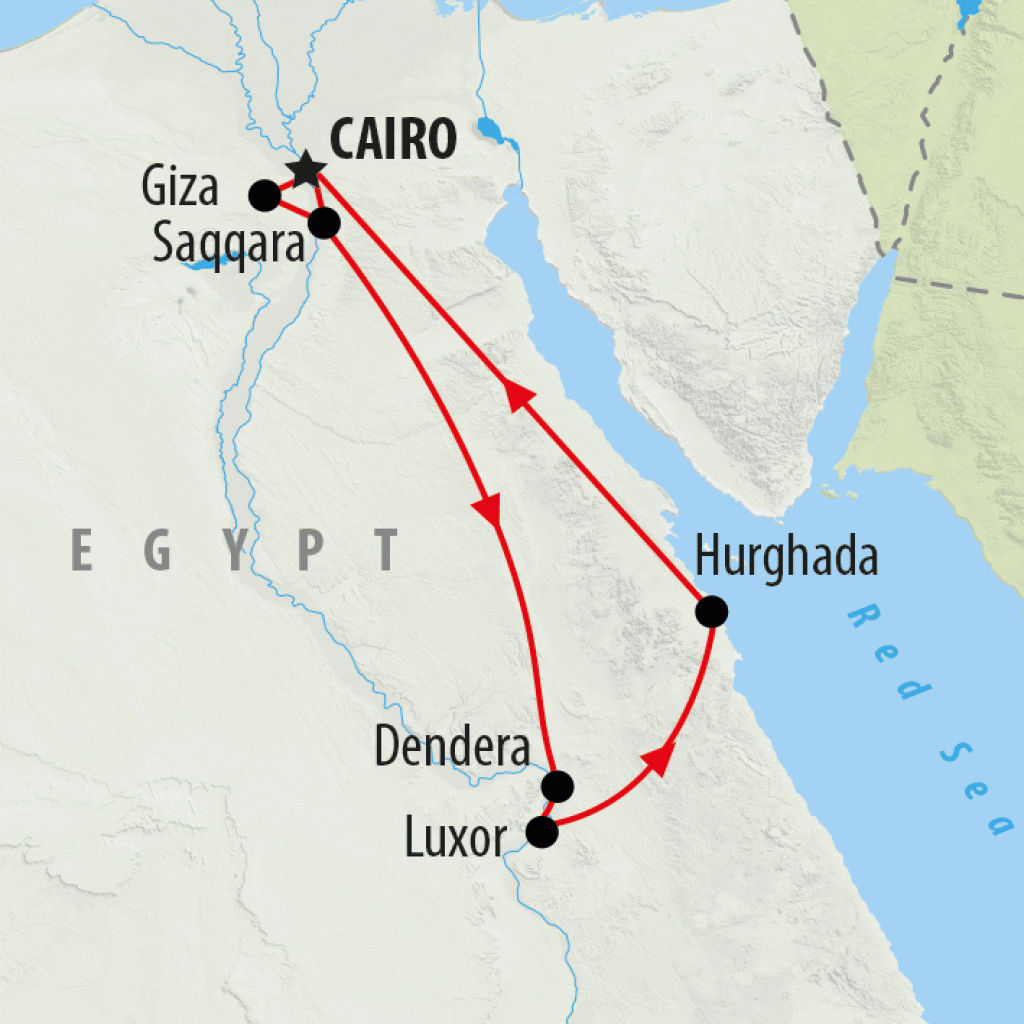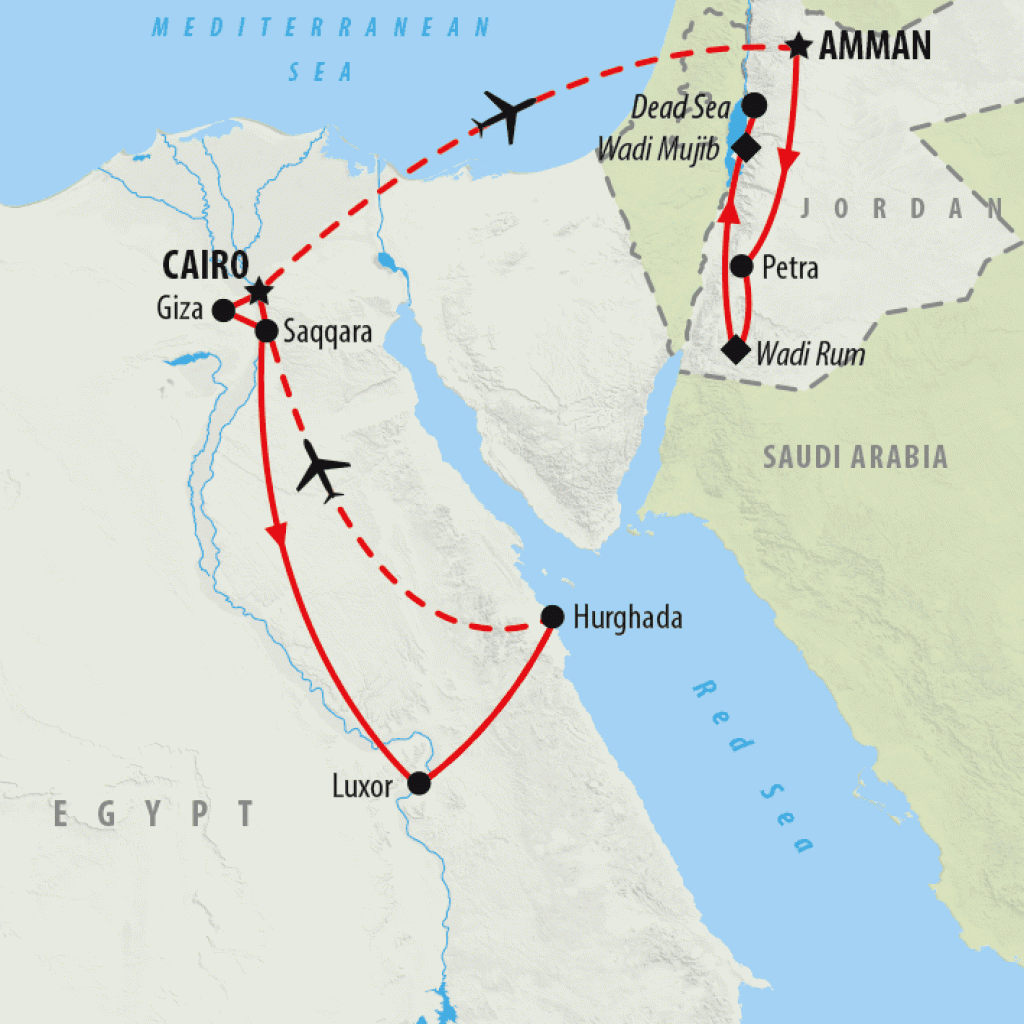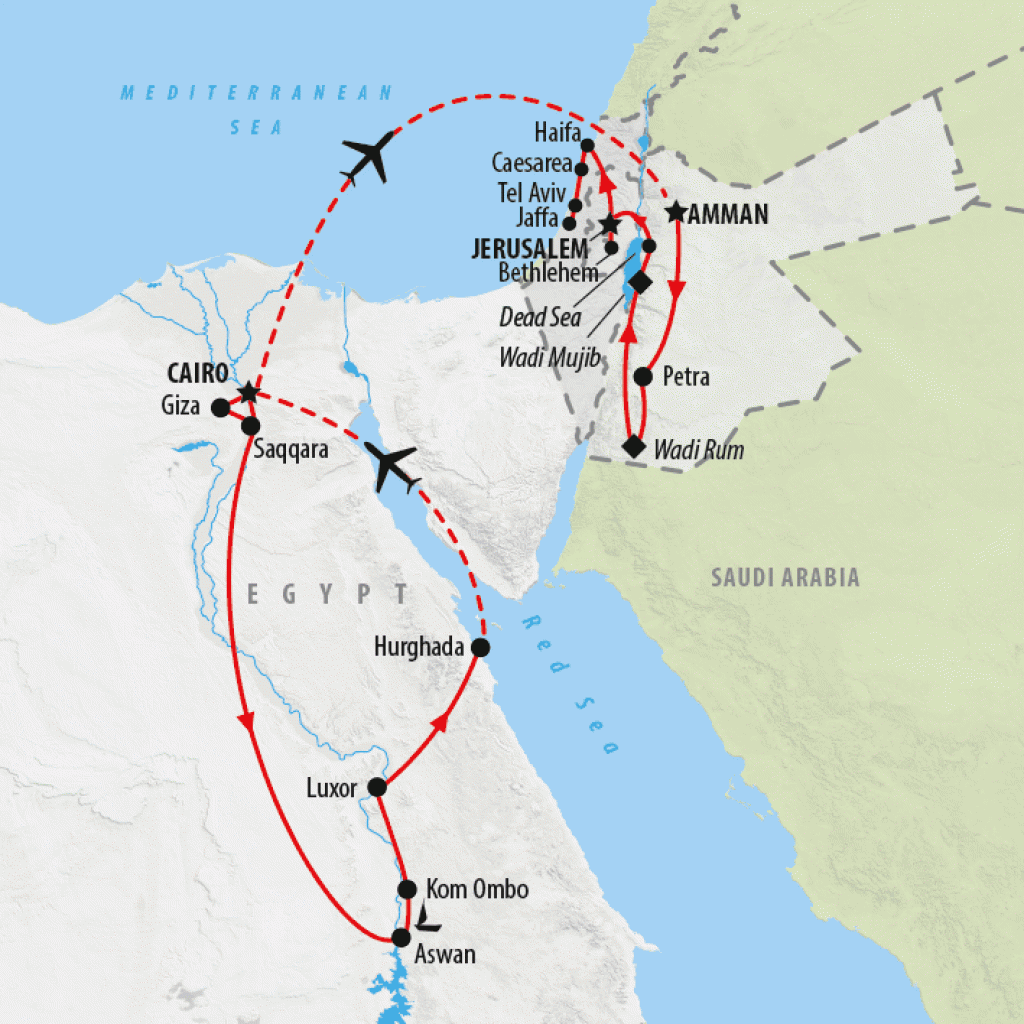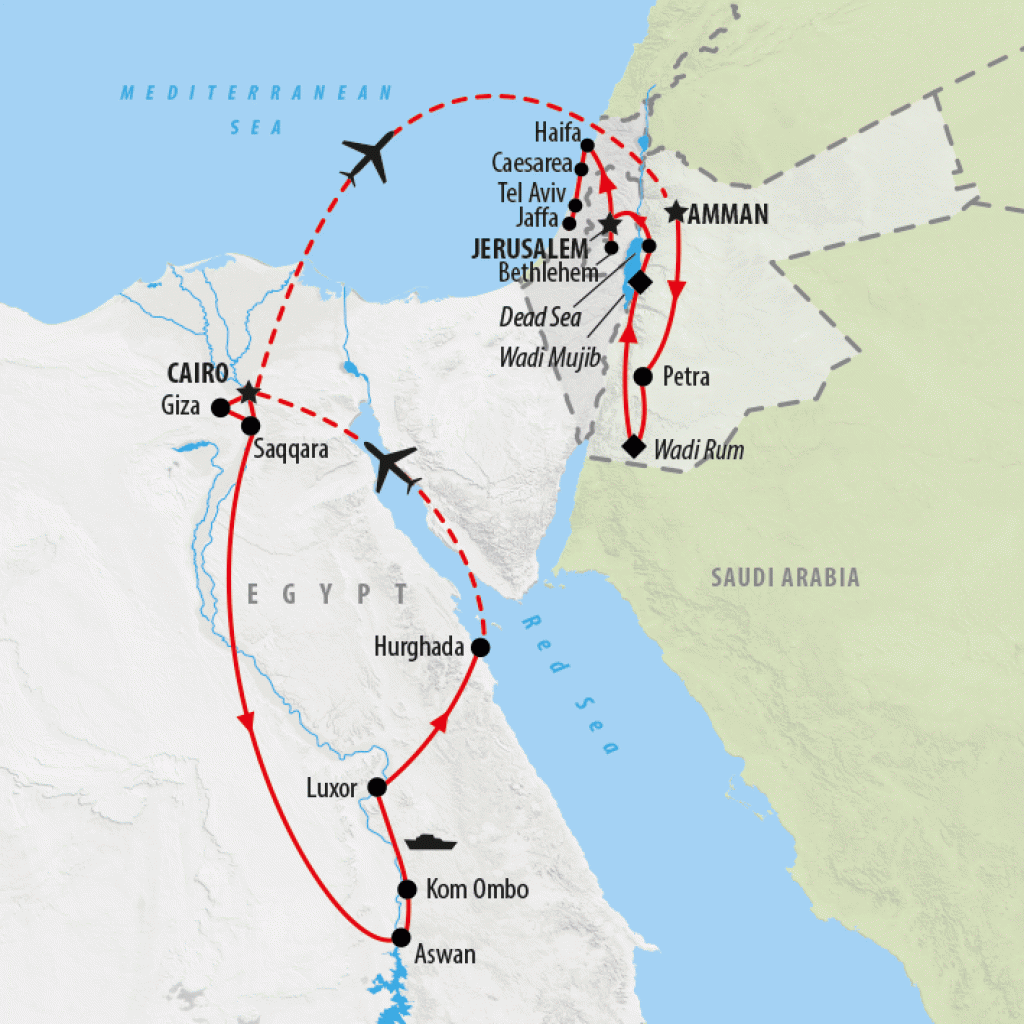Ancient Egypt
Considered one of the world's greatest civilizations, with a history that spans close to 3,000 years, the Ancient Egyptian civilization left a compelling legacy in the many monuments that have survived the test of time. As one of the world's six civilizations to have emerged independently, Ancient Egypt has long intrigued anthropologists and today continues to draw travellers looking to discover mighty pyramids, impressive temples, sacred chambers and treasure-filled tombs. Here's a guide to the main highlights of Ancient Egypt.
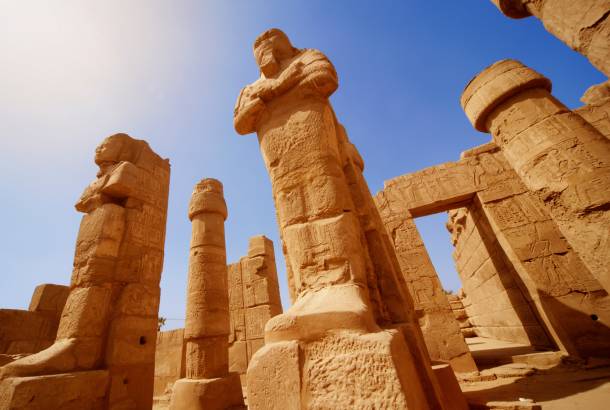
A Brief History
The official history of Ancient Egypt begins in 3100 BC (Early Dynastic Period - c. 3050–2686 BC) when King Meni united the two kingdoms of Upper and Lower Egypt. Ancient Egypt's history is then divided into three stable Kingdoms - the Old Kingdom (2686–2181 BC) when the Pyramids were built, the Middle Kingdom (2055–1650 BC) which saw an explosion in art and literature, and the New Kingdom (1550–1069 BC), when many great temples were built. These Kingdoms are separated by Intermediate Periods, characterised by political instability. The glory of Ancient Egypt fell into decline in around 1070 BC, when Egypt effectively split back into two states.
The earliest settlements of Ancient Egypt concentrated on the Nile Valley at a time when the climate was much wetter and the lands much greener. Much of the success of Ancient Egypt is attributed to the way these people adapted to and utilized the ever-changing water levels of the River Nile. With clever irrigation systems and crop production, this was a civilization that was way ahead of its time. Ancient Egypt reached its peak during the New Kingdom, under the rule of some of the period's most well-known pharaohs including Tutankhamun, Ramses II, Amenhotep III and Queen Hatshepsut. The spoils of these rulers and their prosperity can be found dotted across Egypt from the bejewelled death mask of King Tutankhamun, to the temples of Abu Simbel in the south.
With such an illustrious history, it's little surprise that there's a wealth of ancient sites to visit in Egypt. From the world-famous attractions frequented by travellers from across the centuries to the lesser-known sites that remain peacefully quiet. Here's our guide to the best of what ancient Egypt has to offer.
Highlights around Cairo
Some of Egypt's most popular ancient sites can be visited from Cairo, the Islamic world's greatest city and a travel destination in its own right with Coptic churches and bustling souks.
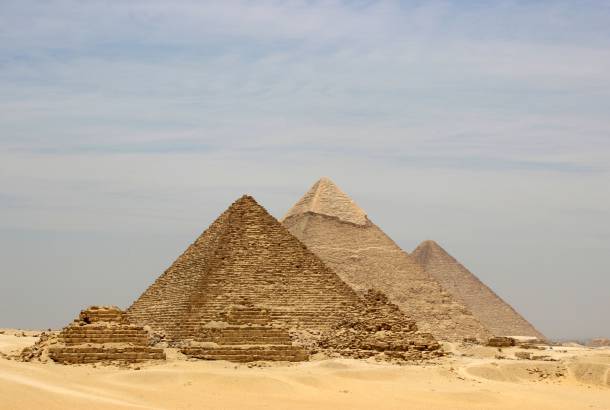
Pyramids of Giza
The great Pyramids of Giza need little introduction. Looming large on the outskirts of Cairo, these magnificent monuments are the world's oldest tourist attraction and the sole remaining survivor of the ancient seven wonders. For many travellers, the Pyramids are the epitome of Ancient Egypt while for scholars, they evoke endless debate on exactly how they were built. Standing beneath them it's less easy to laugh at theories surrounding alien-intervention as the sheer size and arrangement of the Pyramids are beyond imagination.
The archaeological site of Giza consists of three pyramid complexes along with the legendary Sphinx, a large limestone statue measuring 74 metres-long with the body of a lion and a human head believed to depict Pharaoh Khafra. Of the three monuments the Great Pyramid of Cheops is the oldest and largest with an estimated 2.3 million blocks used in its construction. It's possible to enter the pyramid along a low, narrow corridor (not for the claustrophobic) that leads to the exquisitely built Great Gallery and central chambers - an experience like no other.
Thanks to its site on higher ground, the Pyramid of Chephren often appears to be the largest of the three and similarly to Cheops, has an internal burial chamber that can be entered as well as a funerary temple outside of the pyramid and causeway leading to the Sphinx. The Pyramid of Mycerinus is the smallest of the Pyramids. Known as the Red Pyramid for the rusty hue of the Aswan granite used in its construction, its smaller size doesn't make it any less impressive.
Top Tip - Head south of the Mycerinus Pyramid for the best viewpoints of the Pyramids close together. In the late afternoon move towards the west from here for the best lighting and east in the morning.
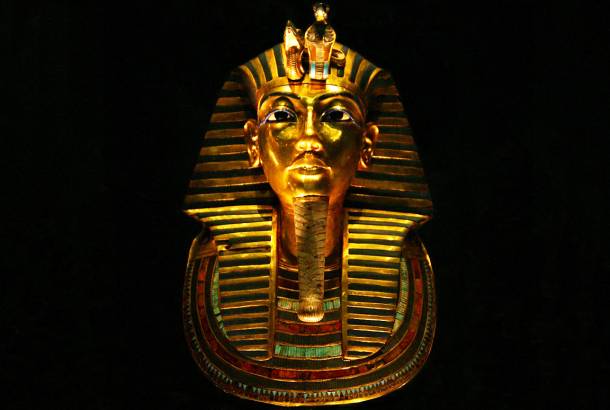
Museum of Egyptian Antiquities & other fascinating museums!
Located in downtown Cairo, the Museum of Egyptian Antiquities is home to a collection of ancient artifacts spanning three millennia. It would take close to a year to see all of what the museum contains but thankfully the main highlights can be covered in a half day visit. Top of the list of highlights is the Tutankhamun exhibition, which includes the boy-king's solid gold funerary mask inlaid with coloured glass and gemstones, one of the best-known objects of Ancient Egypt. Other highlights include the colossal statue of Akhenaten with its striking and delicate features, and the luminous golden mask of Psusennes I. The Egyptian authorities are working hard to get a new Grand Egyptian Museum ready for opening in 2022. This will be the most comprehensive Ancient Egyptian museum in the world and will display all manner of famous artefacts, including some never to have been shown on public display before. Many of the artifacts in the existing museum will be relocated, but the Museum of Egyptian Antiquities will remain open.
An overview of Ancient Egypt's pharaonic civilization is displayed in the Rotunda and the Atrium with monumental sculptures from various eras while more detailed exhibits on the ground floor follow a clockwise direction and chronological arrangement.
Until recently, the museum was also home to the mummified remains of some of Egypt's most famous rulers. But these mummies, including Ramses II and Queen Hatshepsut, now reside in the National Museum of Egyptian Civilization. We visit both of these sites on our Egypt tours.
Top Tip - Visit with a guide (provided on our group tours and Tailor-made holidays) to make sense of the staggering collection of exhibits. As the museum works hard to catalogue and label everything on display, an experienced guide will bring the exhibits to life with their role in history.
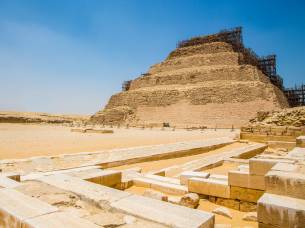
Necropolis of Saqqara
Located south of Giza on the edge of the Western Desert, the necropolis of Saqqara is Egypt's largest archaeological site, occupying an area of 7 x 1.5 kilometres. Serving as the cemetery for Memphis - the ancient capital of Egypt for over 3,500 years, Saqqara was the final resting place for numerous pharaohs. These kings were buried within 11 major pyramids, the most famous of which is Zhoser's Step Pyramid. This pyramid is largely considered to be one of Egypt's earliest and dates back to 2630 BC. Originally measuring 62 metres-tall with polished white limestone cladding, the pyramid and its surrounding funerary complex are just one of many sights contained within Saqqara. Elsewhere, important administrators and generals lie buried in hundreds of smaller tombs known as mastabas, which are rectangular in shape with flat-topped roofs and outward sloping sides, while the underground Serapeum contains huge granite sarcophagi with many of the treasures found within now on display in museums around the world.
Top Tip - Saqqara is just a short distance from Giza and the iconic pyramids, which means it can be perfectly combined in a day tour from Cairo.
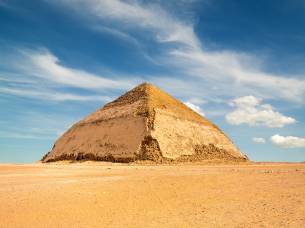
Pyramids of Dahshur
Further south of Saqqara lies the royal necropolis of Dahshur, which contains some of Egypt's most impressive pyramids yet sees surprisingly fewer visitors. Dating back to the 4th and 12th dynasties, 11 pyramids once stood in Dahshur but only two have withstood the test of time - the Red Pyramid, one of the very first pyramids ever built in Egypt, and the Bent Pyramid, which has remained remarkably intact. These two pyramids mark an important stage in Ancient Egypt's pyramid-building history with the first attempt to build a smooth-sided pyramid. Although this was ultimately something of a failure with the unstable base and uneven weight distribution resulting in the 'bent' shape of the pyramid, the pair are still a breathtaking sight rising from the desert sands with dimensions exceeded only by the Great Pyramid of Giza.
Top Tip - Bring a torch as the electricity that supplies the lights in the Red Pyramid's interior chambers sometimes fails. The interior of the Bent Pyramid is closed to the public.
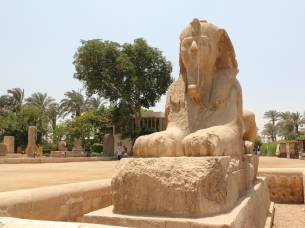
Memphis
Although little remains of the ancient capital, Memphis is worthy of a visit for its pivotal role in Ancient Egypt's history and for its claim to being the world's earliest imperial city. Constructed from mud-brick, Memphis has largely been reclaimed by the Nile silt with just a handful of surviving monuments including the Colossus of Ramses II, which lies on its back in a concrete shelter, and an impressive alabaster sphinx. The small open-air museum of Memphis can be visited in a short amount of time and although not nearly as impressive as Egypt's other ancient sites, the time and weather-ravaged site offers fragmented evidence of its glorious past with rustling palm groves and gardens that make for a pleasant visit.
Top Tip - The short distance between Memphis, Dahshur and Saqqara mean that all three of these fascinating sites can be combined on a day trip from Cairo.
Highlights along the Nile
The Nile River traces a route from Egypt's southern border with Sudan to its delta along the coast beside the Mediterranean Sea. The highlights covered here span the distance from south of Cairo to Luxor.
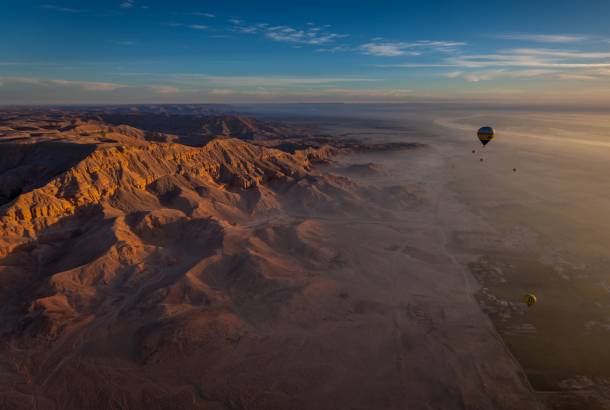
Valley of the Kings
Spread across the arid Theban Hills on the Nile's west bank near Luxor are Ancient Egypt's most famous royal tombs. Unlike the pharaohs of the Old Kingdom who were buried in the north around Giza and the Nile Delta, the ruling dynasties of the New Kingdom preferred to be buried close to the ancient capital of Thebes (present-day Luxor). The hidden underground mausoleums were built over the course of 500 years to preserve the mummified bodies of Egypt's royal figures, as well as favoured nobles and their families. After centuries of looting and tomb-robbing, most of the treasures have been lost, but with vast chambers and wall murals, the elaborate tombs are impressive enough.
Since archaeologists first discovered the site, an incredible 63 tombs have been uncovered, some of which were known to visitors as early as the Ptolemaic times (323 - 30 BC). Of these 63 tombs the most well-known is that of the boy-king Tutankhamun, discovered by Howard Carter in 1922. The tomb is surprisingly intact, and once contained the iconic golden death mask which is now housed in Cairo's Egyptian Museum.
In order to save the burial chambers from damage caused by roaming hands and humidity, only eleven tombs are open to the public at any one time, with the rest closed for restoration. Not far from the Valley of the Kings lies the Valley of the Queens where the wives of pharaohs were buried, including Queen Nefertari, in 80 tombs that have fine murals to rival those found in the kings' tombs. Entering the Theban Necropolis via the main road through New Gurna will mean you pass by the gigantic Colossi of Memnon statues that once marked the entrance to the long-lost mortuary temple of Amenophis III.
Top Tip - Photography is not permitted in any of the royal tombs around Luxor but you can purchase postcard images from the vendors around the site as a memento of your visit. In fact, it's best to leave your camera somewhere safe as it's not possible to take them through the entrance gates to the sites.
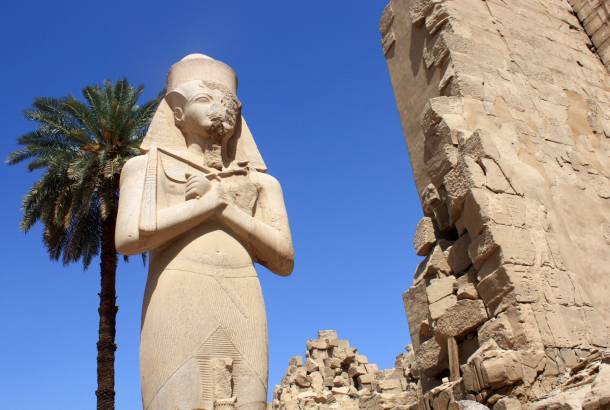
Karnak Temple
The spectacular temple complex of Karnak is Egypt's second most visited archaeological site and with good reason - a host of sanctuaries, kiosks, pylons and obelisks stand in superb states of preservation and testify to the magnitude and complexity of this ancient religious site. Dedicated to the Theban trio of gods Amun - one of the most powerful deities in Ancient Egypt, Mut - a mother goddess associated with water, and Khonsu - the moon god who marked the passage of time, Karnak comprises three separate temple enclosures that were constructed over a period of 1,300 years. Virtually every Egyptian pharaoh left their own mark on this staggering site.
At the heart of the complex stands the great Temple of Amun, a sprawling complex that measures some six acres. The Processional Way is lined by sphinx statues bearing ram heads and the Great Hypostyle Hall is a canopy of towering columns, ornamented with hieroglyphics and carvings. This temple deserves a minimum half day for exploration thanks to its sheer size and scale and you may wish to return at night for the informative Sound and Light Show that tells the story of Karnak and the dramatic history of ancient Thebes.
Top Tip - Plan your visit for early morning or late afternoon to avoid the crowds. The site opens at 6am with the majority of visitors arriving from around 9am until mid-afternoon.
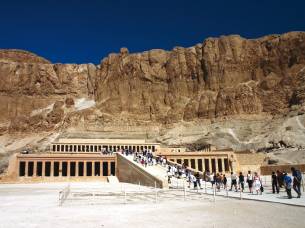
Queen Hatshepsut's Temple
Within the grounds of the Theban Necropolis stands the exquisite Mortuary Temple of Hatshepsut, built in honour of the only female pharaoh to reign over Egypt. Set against the dusty Theban Hills in a large natural amphitheatre, the temple is instantly recognisable with its three elongated colonnaded terraces connected by long ramps. The temple would have once been reached via an avenue flanked by sphinxes with the Middle Terrace decorated with myrrh trees and water fountains, features that have now disappeared. Of the four stone-carved lions that would have stood at each corner of the ramp only one survives today. Following the ramps from the entrance to the Upper Terrace takes you pass numerous colonnades with reliefs that depict events from Hatshepsut's life and a pair of chapels with friezes and pillared chambers. The highlight of the Upper Terrace is the row of eight giant statues of Osiris that appear to guard the Sanctuary of Amum with arms crossed and serene faces looking out across the ruins.
Top Tip - Hatshepsut's Temple is located close to the Valley of the Kings so can easily be combined on a full day tour of the west bank in Luxor.
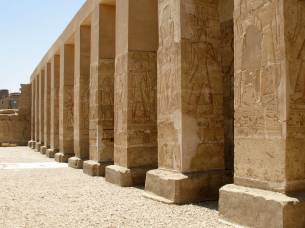
Abydos
Established as a necropolis as early as 4000 BC, the cult centre of Abydos was an important pilgrimage destination for Ancient Egyptians and one of the holiest cities during a history of constant use that spanned more than 4,500 years. Dedicated to Osiris, the god of the dead, and considered to be the gateway to the underworld, Ancient Egyptians endeavoured to visit Abydos during their lifetime or be buried in the grounds of the city if not. Today Abydos is an important archaeological site and home to some of the finest ancient artwork in Egypt, found in the Temple of Seti I. Built as a political statement to affiliate pharaoh Seti with the gods of death and resurrection, the temple features a number of sanctuaries, chapels and shrines with exquisite bas-reliefs depicting scenes from Seti's life and that of his son and predecessor Ramses II as well as scenes of a religious nature.
Top Tip - Abydos can be visited from Luxor in combination with Dendera. The drive takes around 3 hours each way but allows an hour at each site.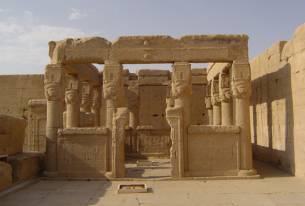
Dendera
The Temple of Hathor in the ancient cult centre of Dendera is one of Egypt's best preserved monuments. Featuring an astronomical ceiling depicting the heavenly bodies and a well-preserved stone roof, the temple provides invaluable clues to the solar rituals carried out in similar Ancient Egyptian cult sites. This particular site was the chief place of worship of Hathor, the goddess of joy, nurture and motherhood, who is commonly depicted as a cow. Behind the pylon-shaped temple facade stands sacrificial halls and sanctuaries with walls and ceilings covered in fine bas-reliefs and hieroglyphs. Built at the very end of the Pharaonic period, substantial additions were made to the temple by the Greeks and Romans, which illustrates how these civilizations incorporated the temple designs, rituals and deities of the Ancient Egyptians into their own creations.
Top Tip - Dendera can be reached by a leisurely cruise on the Nile from Luxor. The option of a motor boat or felucca are available and the trip offers a chance to enjoy the scenery of the Nile Valley.
Highlights south of Luxor
The section of the Nile between Luxor and Aswan is the most popular cruising destination in Egypt with a wealth of ancient sites and stunning riverside scenery. Here we cover the highlights of this region.
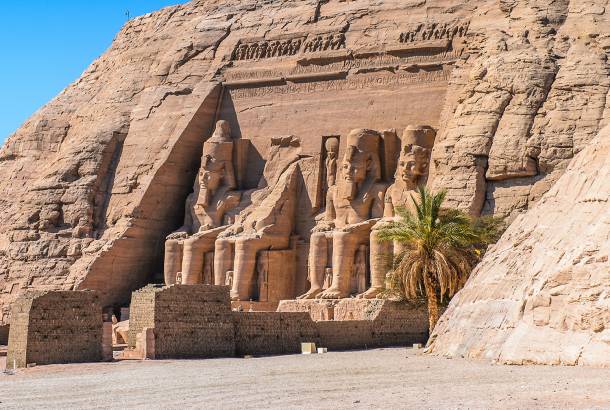
Abu Simbel
Originally carved out of the mountainside at the second cataract of the Nile River, the temple complex of Abu Simbel is an awe-inspiring display of New Kingdom monumentalism. Built by Ramses II in the 13th century BC to impress his power and the Egyptian religion on his southern neighbours, the Sun Temple of Abu Simbel features four gigantic statues of Ramses, gazing out over his lands. The deified pharaoh had the temple precisely oriented so that twice a year on the date of his ascension to the throne and on his birthday, the sun's rays would light up the inner sanctuary and the cult statues of Amun (King of Gods), Re-Harakthe (Horus of the Horizon) and Ramses himself while Ptah (the god of darkness) remained in shadow. This event is know as the Abu Simbel Sun Festival, and visitors flock to the temple at dawn to watch the event unfold.
During the 1960s the entire temple complex was relocated amid fears of devastating water levels caused by the damming of the Nile at Aswan. Over the course of two years and at a cost of nearly $40 million, UNESCO had the monuments moved stone by stone and reassembled at a site further back with a false mountain fashioned to imitate the original site. Today the vivid blue of Lake Nasser makes a striking image against the warm sandstone of the temples and the skill of the move ensured that the bi-annual illumination still occurs though a day later than what Ramses planned.
Behind the impressive facade of the Sun Temple is the Hypostyle Hall lined with imposing statues of Ramses that stand beneath a painted ceiling and in front of walls decorated with dramatic reliefs. Further in, reliefs are also found in the eight chambers while the central Sanctuary contains the four cult statues. Ramses' wife is honoured with the Hathor Temple of Queen Nefertari north of the Sun Temple. The rock-hewn facade features six towering statues of Ramses and Nefertari in standing positions with their children stood beside them.
Top Tip - The best way to reach Abu Simbel is by plane. Not only is it the quickest option but it also provides impressive views of Lake Nasser.
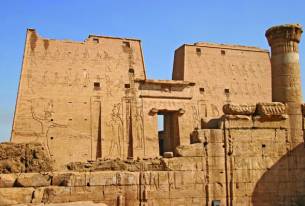
Edfu
The Temple of Horus at Edfu has the distinction of being the largest and most completely preserved pharaonic, albeit Greek-built, temple in Egypt. It was one of the last monumental temples built on a large scale and though much newer than the temples of Karnak and Luxor, its excellent state of structural preservation fills in historical gaps as it is, in effect, a 2,000 year-old replica of an architectural style that was already age-old during Ptolemaic times. The entrance to the temple is guarded by two massive granite falcons and once inside the court there is a colonnade of 32 decorated columns and festival reliefs on the inner walls. Further on in the oldest section of the temple is the Hall of Offerings with the sacred barques - a sailing vessel with masts - of Horus and Hathor carved in wonderful detail.
Top Tip - Bring a torch to explore the two small rooms built into the entrance wall - the Chamber of Consecrations and the Library of Sacred Texts.
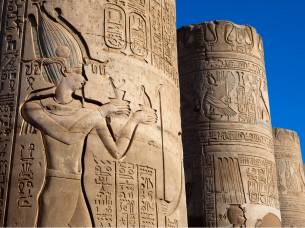
Kom Ombo
Thanks to its position on a low promontory beside the Nile, the Temple of Haroeris and Sobek near the town of Kom Ombo is a highlight on any river journey. The unusual double temple is dedicated to two distinct divinities from Egyptian mythology: the crocodile-headed Sobek, god of fertility and creator of the world, and Haroeris or the ancient falcon-headed Horus, the solar war god. Each of the two gods has their own entrance, court, chambers, colonnade and sanctuary with fine reliefs with the left side of the temple dedicated to Haroeris and the right to Sobek. Despite the damage caused by the changing water levels of the Nile, earthquakes and the removal of stones for other monuments, the roofless and incomplete temple still gives a clear impression of its perfect symmetry. South of the main temple is the Roman Chapel of Hathor, dedicated to the wife of Horus.
Top Tip - The ticket for the temple also includes entrance to the recently opened Crocodile Museum, which is definitely worth a visit with an interesting display of crocodile mummies and the added bonus of air-conditioning.
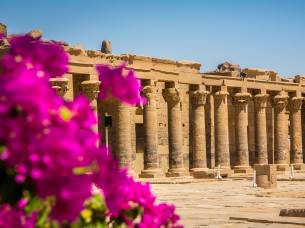
Philae Temple
Constructed during Ptolemaic times with roots that date back to the New Kingdom, the Temple of Isis, or the Philae Temple as it is commonly known, has long captivated travellers. Originally stood on the sacred island of Philae, the temple spent half the year submerged by water with gondola-like tours offered to glimpse the columns beneath the surface. The construction of the Aswan Dam threatened to permanently submerge the temple and cause irrevocable damage and so the monument was moved to nearby Aglika Island, along with the small ruined Temple of Hathor and the attractive Kiosk of Trajan which features well-preserved floral columns. The architecture of the Isis temple perfectly blends Ancient Egyptian and Greco-Roman styles with sculpted pillars, lofty pylons and colonnades, and shows how the later rulers utilized what had gone before.
Top Tip - Bring provisions with you as there is nowhere on the island to buy food or drinks.
Getting Around Egypt
Depending on which ancient sites you wish to visit in Egypt, there are a number of options when it comes to getting around. For those merely visiting Cairo for a long-weekend or flight stopover, private transfers are the most convenient way of reaching the Pyramids and outlying sites. From Cairo to Luxor or Aswan you can take a short domestic flight with EgyptAir or save on a night's accommodation by taking an overnight sleeper train.
Once in the southern region of Egypt, the best way to get around and explore the sites along the Nile is by boat. There's no end to the choice of luxury Nile cruise boats operating one-way and return journeys between Luxor and Aswan that last from 4-8 days. During the course of the trip stops will be made at Kom Ombo, Edfu, and Esna for touring of the popular temples. Another great option, and a cheaper alternative, is felucca sailing between Luxor and Aswan making the same stops en route.
Best Time to Visit
Egypt generally has a hot desert climate which means stifling hot and dry summers and pleasantly warm winters. The peak tourist season coincides with the balmier weather between late November and late February with an additional spike around the Easter holidays in March or April. The best time to visit Egypt is during October and early November when the temperatures are still bearable and the crowds thinner. There's more information on our best time to visit Egypt page!
Recommended Tours
Here's a selection of tours that cover some of Egypt's many ancient wonders. You can also browse through our full collection of Egypt tours for more ideas or contact our Tailor-made team if you're after a bespoke itinerary taking in more of Egypt's sites.
